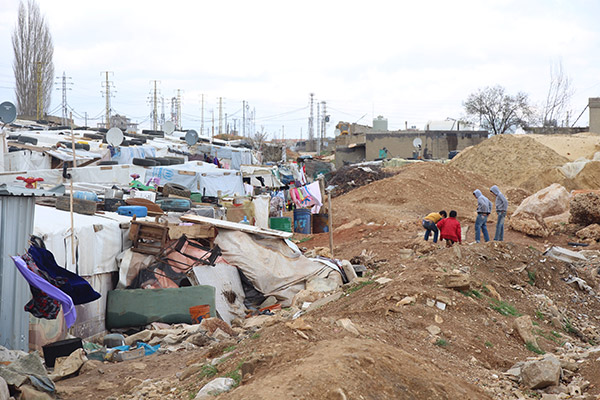Backstory
Global eye
Gathering medical news from around the world

Photo by Hayley Goldbach
On a Thursday this spring I was sitting at my desk at NBC News in New York City. By Friday, I was walking through the squalor and mud of a Syrian refugee camp in Lebanon with the chief medical editor for NBC News, Nancy Snyderman, MD.
I am a fourth-year medical student — but as the Stanford-NBC News Fellow in Global Health and Media I’m getting exposure to global health and medical journalism.
Already since last summer, I’ve worked in Haiti at a hospital, in New Delhi as an intern for the World Health Organization and in Thailand to help with an international summit on leprosy. I spent the fall at Stanford’s graduate program in journalism. I have interviewed a mind-boggling array of people: a man with leprosy in India, the president of the American Academy of Dermatology, illegal immigrants living in a Northern California garage, a California state senator, countless medical researchers at the cutting edge of their fields.
And for a week in March I found myself at the refugee camp in Lebanon, following the stories of Syrian children living there in tents with their entire families on the bank of a trash-filled river. I interviewed the kids — about their toys, their squabbles, their memories of Syria and their hopes for the future. One girl, 7, with piercing blue eyes, became my shadow and my companion. At one point she leaned over to whisper something in my ear. When I asked her to tell the translator, she shook her head. “She’s telling me that what she wants to say is between you and her only,” he informed me. I could only smile back at her.
That chilly, rainy week I saw birth, death, laughter and tears. I am used to seeing those things through a medical caregiver’s lens, but not through a journalist’s. My job was not to intervene, but to observe, document and report.
One unforgettable story was that of 19-month-old Nevine, who arrived with her right side paralyzed. Doctors were worried — justifiably — about polio. Syria’s vaccination rates have plummeted: from 99 percent before the war to 52 percent in 2012. When Nevine’s mother looked at me with pain in her eyes and asked whether her child would ever walk again, I wanted nothing more than to offer her assurances — but I couldn’t. In journalism and in medicine, it’s important not to jump to conclusions.
One lesson I learned is that, consciously or not, physicians always function as health-care reporters. We are cast in this role when we interpret data for our patients, recommend certain interventions or review information patients have printed from WebMD. Doctors know firsthand what an honor it is to be with people at their most vulnerable and listen to their stories.
Sometimes those stories have happy endings. We later found out that Nevine’s test results were not consistent with polio. An MRI showed a small area of bleeding deep in the part of her brain that controls movement on the right side of her body. By the time I left, she was already improving.